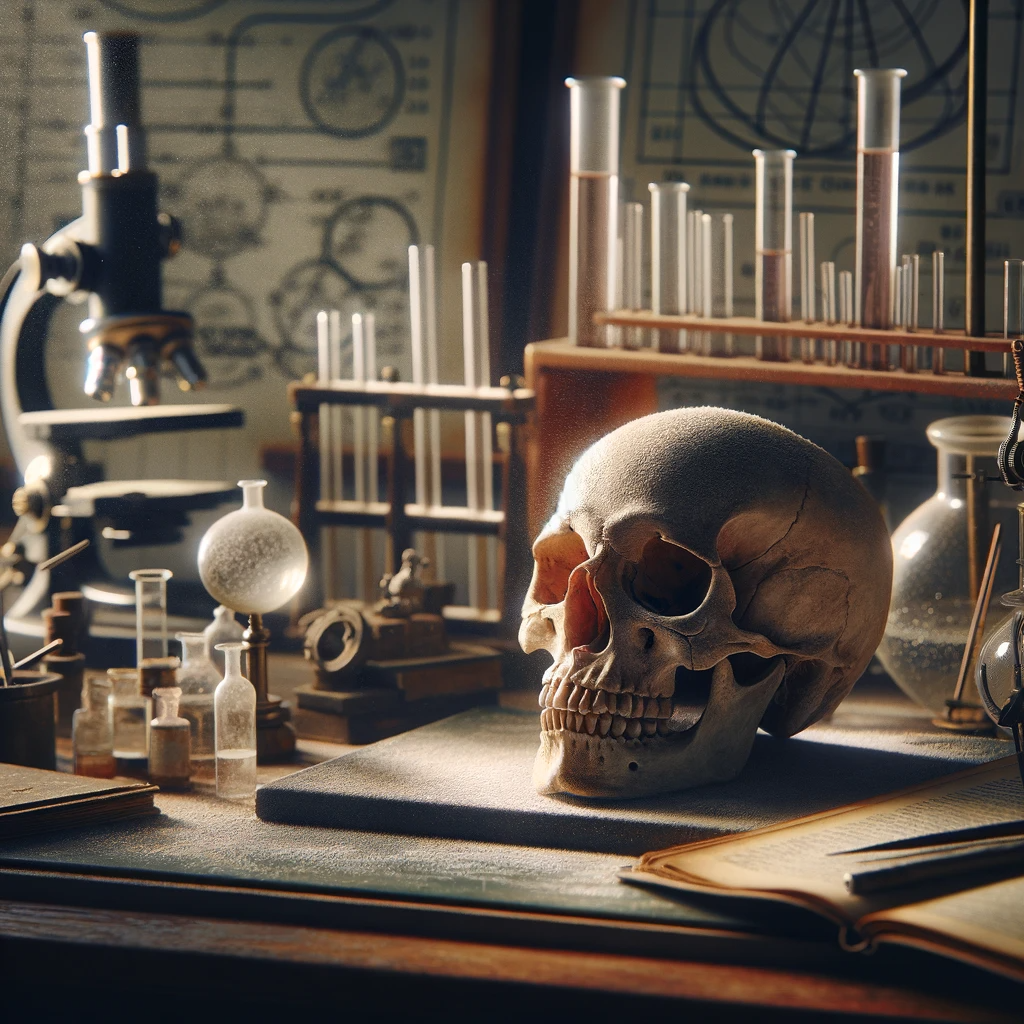Skull
Definition
Skull refers to the bony structure in the head that houses the brain, and supports the structures of the face.
Parts of Speech
- Noun
Pronunciation
American English
- IPA Pronunciation: /skʌl/
- Respelling: SKULL (with "SKULL" rhyming with "full" and "pull")
British English
- IPA Pronunciation: /skʌl/
- Respelling: SKULL (similar to American English, with "SKULL" rhyming with "full" and "pull")
In both dialects, "skull" is pronounced with a short "u" sound, as in "full" or "pull." The pronunciation of "skull" is consistent between American and British English, clearly reflecting the word's straightforward phonetic structure.
Etymology
The word "skull" has Middle English origins, derived from "skulle", from Old Norse "skoltr", akin to Old High German "skulli".
Derivatives
- Skullcap
- Skull-like
- Skull-shaped
- Skulls
- Skullful
Synonyms
- Cranium
- Braincase
- Head
Antonyms
- None
Usage
"Skull" is used in various contexts, primarily in medical, forensic, anthropological, or biological settings to discuss and analyze the bony structure of the head. It is also used in everyday language as a synonym for head or braincase.
Related Terms
- Cranium
- Mandible
- Skeletal system
- Neurocranium
- Visoranium
Detailed Definition
Noun
- Bony Case: The bony framework of the head, enclosing the brain and supporting the face; the skeleton of the head.
- Example: The forensic team was able to identify the individual from the shape of the skull.
- Symbol of death: Sometimes, the skull is used as a symbol of death or danger.
- Example: Pirate flags often have a skull and crossbones design.
- Head (colloquial): In colloquial terms, "skull" may also refer to the head.
- Example: He has a good skull on his shoulders, referring to intelligence or common sense.
skull



🇨🇳 Mandarin (Simplified Chinese)
- 头骨 (tóu gǔ) - Bone structure of the head
- IPA Pronunciation: /tʰoʊ̯˧˥ ku˨˩˦/
- Respelling in English: toh-goo
🇮🇳 Hindi
- खोपड़ी (khopaṛī) - Bone structure of the head
- IPA Pronunciation: /kʰoːpɽiː/
- Respelling in English: kho-pa-ree
🇪🇸 Spanish
- cráneo
- IPA Pronunciation: /ˈkɾane.o/
- Respelling in English: KRAH-ney-oh
🇫🇷 French
- crâne
- IPA Pronunciation: /kʁɑn/
- Respelling in English: kran
🇸🇦 Modern Standard Arabic
- جمجمة (jamjama) - Bone structure of the head
- IPA Pronunciation: /ʤamˈʤama/
- Respelling in English: jam-JAM-ah
🇧🇩 Bengali
- মুন্ডি (mundi) - Bone structure of the head
- IPA Pronunciation: /mundi/
- Respelling in English: mun-dee
🇷🇺 Russian
- череп (cherep)
- IPA Pronunciation: /ʈʂerʲɪp/
- Respelling in English: chye-ryep
🇵🇹 Portuguese
- crânio
- IPA Pronunciation: /ˈkɾɐ̃.nju/
- Respelling in English: KRAH-nyoo
🇮🇩 Indonesian
- tengkorak
- IPA Pronunciation: /tɛŋ.ko.rak/
- Respelling in English: teng-KO-rak
🇩🇪 German
- Schädel
- IPA Pronunciation: /ˈʃɛːdl̩/
- Respelling in English: SHAY-dl
🇯🇵 Japanese
- 頭蓋骨 (zugai kotsu)
- IPA Pronunciation: /zɯᵝɡai kotsɯᵝ/
- Respelling in English: zoo-guy kot-su
🇻🇳 Vietnamese
- hộp sọ
- IPA Pronunciation: /hɔp sɔ˧˩/
- Respelling in English: hop saw
🇰🇷 Korean
- 두개골 (dugaegol)
- IPA Pronunciation: /tu.ɡe.ɡol/
- Respelling in English: doo-gae-gol
🇹🇷 Turkish
- kafatası
- IPA Pronunciation: /kafatasi/
- Respelling in English: kah-fah-TAH-see
🇵🇰 Urdu
- کھوپڑی (khopaṛī) - Bone structure of the head
- IPA Pronunciation: /kʰoːpɽiː/
- Respelling in English: kho-pa-ree





